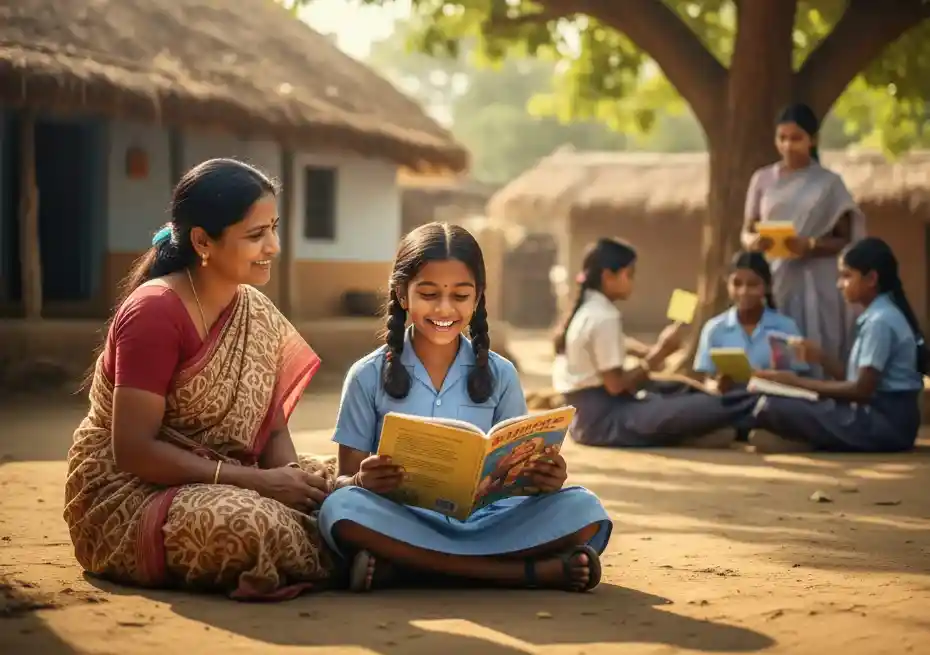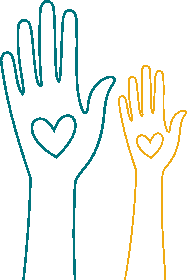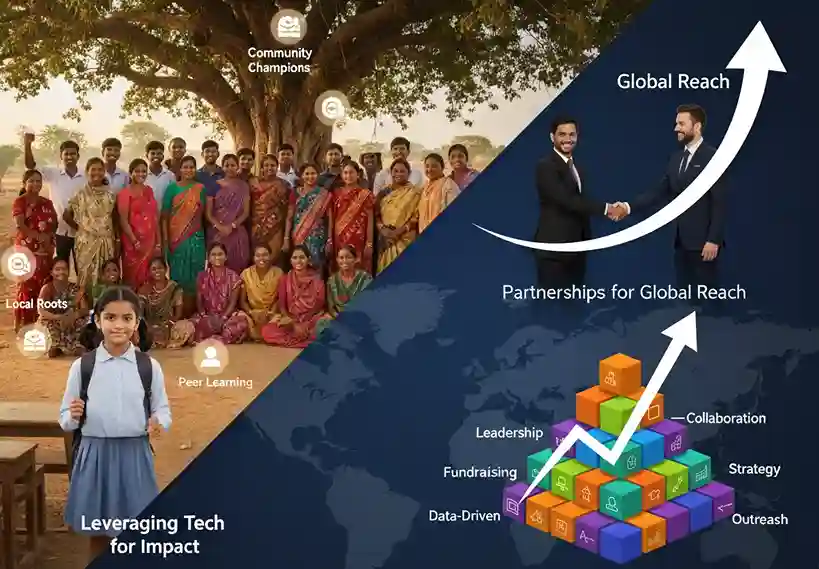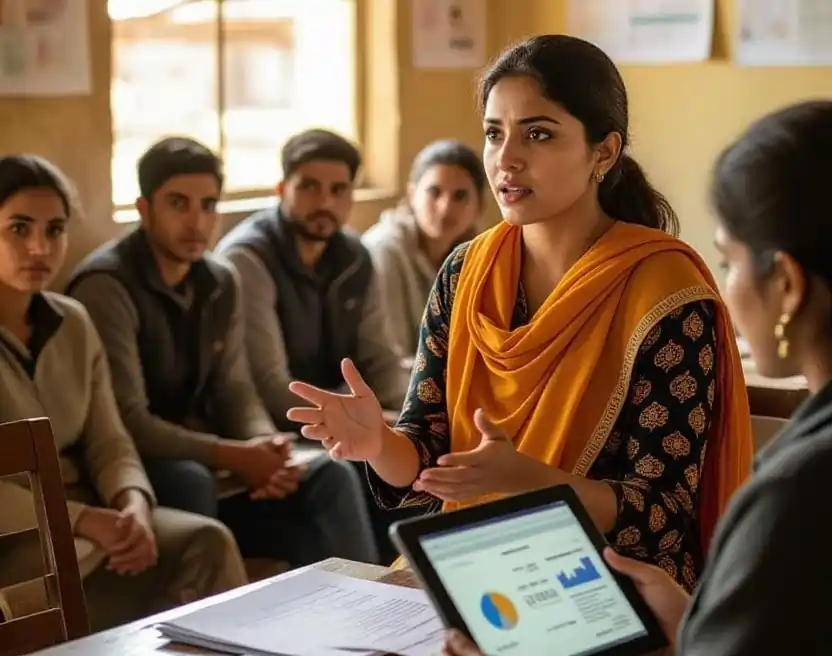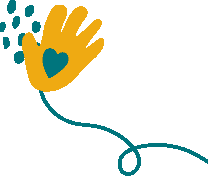Learning poverty in India is a silent crisis affecting millions of children, where over half of 10-year-olds can’t read or understand basic text. It started with one question in Bihar for me, but now I see how this issue touches everyone, regardless of whether you have kids or not.
One chilly morning in Bihar, I met Deepak, a fourth grader with a bright smile and eager eyes. I handed him a Grade 2 storybook, expecting a proud recital.
He looked up at me, paused, and whispered: “Didi, I don’t know how.”
That moment stopped me cold.
I’m not a parent. I don’t work in education. I don’t even live in a rural area. But I couldn’t shake off what just happened. How can a child go to school and still not know how to read at ten?
This is learning poverty in India. And I had to find out how deep the problem runs and what, if anything, I could do.
What Is Learning Poverty?
According to the World Bank, learning poverty in India and globally is defined as the percentage of 10-year-olds who cannot read and understand a basic, age-appropriate text.
I thought this was just an abstract metric… until I met Deepak.
This isn’t about kids being lazy or “not smart enough.” It’s a systemic failure that leaves millions behind, even as they attend school daily. Learning poverty in India highlights gaps in foundational literacy, preventing children from building essential skills for life.
The Latest Numbers on Learning Poverty in India (2025 Updates)
The numbers are staggering and demand attention. Based on the World Bank’s 2024 Learning Poverty Brief (using pre-COVID data adjusted for trends) and the latest ASER 2024 report, here’s what shocked me:
- 56% of Indian children aged 10 cannot read a basic sentence, per World Bank estimates.
- In rural India, around 50-55% of Std V children (aged ~10-11) cannot read a Grade 2 text, showing improvement from 55% in 2022 but still alarmingly high (ASER 2024).
- In states like Bihar and Uttar Pradesh, rates exceed 70%.
- Nationally, this affects over 100 million children—future workers, voters, and parents—locked out of basic literacy.
India, a nation launching rockets to the moon, still grapples with this education crisis. The ASER 2024 report notes recoveries post-COVID, with government schools showing gains: 44.8% of Std V students can now read Grade 2 text, up from 38.5% in 2022.
Causes of Learning Poverty in India: Beyond Bad Schools
Digging into the causes of learning poverty in India, it’s clear it’s not just about “bad schools.” Here’s what I uncovered:
- Early grades lack phonics and vocabulary training.
- High student-teacher ratios (1:60+ in many areas) mean no personal attention.
- Rote learning prioritizes memorization over comprehension.
- COVID-19 closures lasted over a year, with rural students lacking internet (only 24% access).
- No effective tracking of learning outcomes—just attendance.
- Poverty leads to dropouts; girls face early marriage pressures.
A teacher from Madhya Pradesh told me, “It’s not that kids can’t learn. It’s that we don’t always teach effectively.”
Rural vs. Urban: Learning Poverty Affects All Areas
I once thought learning poverty in India was a “rural problem.” But urban slums face similar issues.
From ASER 2024:
- ~50% of rural Std V kids can’t read Grade 2 text.
- Urban areas, though better, still see 40-45% affected in slums.
- Private schools aren’t always the solution—many use outdated methods despite fees.
The divide is narrowing, but learning poverty in India persists across geographies.
Real Stories: The Kids I Can’t Forget
Personal stories bring learning poverty in India to life.
Rani from Rajasthan: At 11, after 5 years in school, she couldn’t read a paragraph. Her parents are day laborers. Unessa Foundation’s after-school phonics sessions changed that. Now, she reads stories and dreams of teaching.
Sohail from West Bengal: He dropped out during COVID to collect scrap. A local NGO reinstated him. “I want to read signs so I don’t get lost,” he said.
These kids aren’t lacking intelligence; they just need a fair chance.
Organizations Fighting Learning Poverty in India
Discovering groups like Unessa Foundation, Pratham, and Room to Read shifted my perspective. They’re the fixers.
Unessa stands out for:
- Remedial classes emphasizing reading skills.
- Community volunteer training.
- Home visits for parental support (even illiterate parents).
- Learning kits with books, flashcards, and essentials.
In 2024, they reached 5,000 kids in Bihar and Rajasthan, reducing local learning poverty by 15%.
Support them via Unessa Foundation (assuming their site; replace with actual if available).
What I Did to Help (And What You Can Do Too)
You don’t need a teaching degree to combat learning poverty in India. Here’s how I started—and how you can:
- Donate ₹500: Funds a full learning kit for one child.
- Volunteer 1 hour/week: Teach basic reading online via NGOs.
- Sponsor a library (₹2,000): Reaches 50 kids.
- Mentor via Zoom: Unessa matches you by language.
- Spread awareness: Share this post with #EndLearningPovertyInIndia.
It’s more fulfilling than endless scrolling.
Final Thoughts: If You Can Read This, You’re Lucky
Notice literacy everywhere, in menus, signs, and social media. Imagine Deepak, Rani, or Sohail facing a page of letters with fear.
That’s the reality for 56% of 10-year-olds due to learning poverty in India.
If ignored, we risk:
- Higher unemployment.
- Widening inequality.
- Weaker democracy.
- Stunted economy (1.5% GDP loss annually, per UNESCO).
The fix? Books, teachers, support. What’s missing? Our involvement.
State-Wise Learning Poverty Rates in India (2024 Estimates)
Based on ASER 2024 and World Bank data, here’s a snapshot (higher rates indicate worse poverty):
| State | Learning Poverty Rate |
|---|---|
| Bihar | 70-78% |
| Uttar Pradesh | 65-74% |
| Madhya Pradesh | 60-70% |
| Rajasthan | 60-69% |
| Jharkhand | 58-68% |
| Chhattisgarh | 55-65% |
| Odisha | 53-63% |
| West Bengal | 51-61% |
| Maharashtra | 48-58% |
| Tamil Nadu | 45-55% |
| Kerala | 30-38% |
Kerala’s low rate proves good policies work, but India needs tailored approaches.
Beyond Education: The Broader Impact of Learning Poverty in India
From UNESCO studies: Kids unable to read by 10 are 20% more likely to drop out by 15.
Learning poverty in India could slash GDP by 1.5% yearly. It’s an economic issue.
It affects the agency too:
- Illiterate women may lose land rights.
- Voters without reading skills can’t make informed choices.
This impacts all Indians.
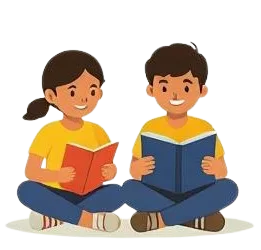
The Role of Parents and Communities in Reducing Learning Poverty
In Bihar, I met an illiterate mother who listened to her daughter’s stories daily.
Key insights:
- 60% of rural parents are illiterate.
- NGOs like Unessa teach support methods: listening, questioning, and showing interest.
- Community “reading circles” involve grandparents and are low-tech but effective.
Parents are key to ending learning poverty in India.
Can Technology Help Combat Learning Poverty in India?
Tech showed promise during COVID, but challenges remain:
- Only 24% of rural homes have internet.
- Offline tools like flashcards and audio stories are crucial.
- Apps like Google Read Along on tablets help; ₹5,000 sponsors one for 30 kids.
Tech supports, but human mentors are essential.
Where India Stands Globally on Learning Poverty
India’s 56% rate is:
- Higher than Sub-Saharan Africa (48%).
- Better than Nigeria (70%).
- Worse than Vietnam (20%).
Vietnam’s success? Teacher training and early literacy. India’s NEP 2020 aims for a similar goal, but NGOs bridge gaps.


